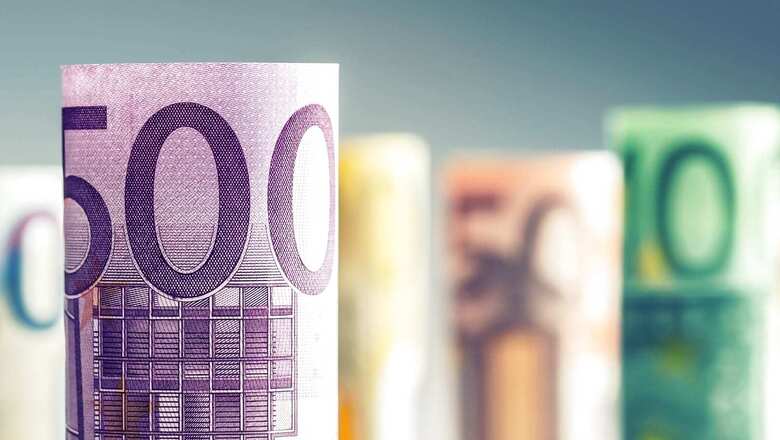
views
LONDON: The euro fell on Tuesday, almost touching parity with the dollar, a threshold not crossed for two decades, weighed down by the likelihood of recession triggered by an energy crunch and an ECB rate rise campaign that lags far behind that of the Fed.
The dollar index, a measure against six counterparts, with the euro most heavily weighted, was up 0.3% at 108.45. It had earlier climbed to 108.47, its highest since October 2002.
The euro has borne the brunt of dollar strength, falling as low as $1.00005, the weakest since December 2002, a level some analysts flagged as parity being tested.
Neil Jones, head of currency sales at Mizuho Bank said a large queue of buy euro orders at $1 to either reduce cash exposure via purchasing spot or option structures was keeping the euro steady around those levels.
The euro came close to being tipped over the edge after a dire reading from the ZEW economic research institute, which showed German investor sentiment nosedived in July to -53.8 points from -28.0 in June.
The biggest pipeline carrying Russian gas to Germany, the Nord Stream 1, began annual maintenance on Monday, with flows expected to stop for 10 days. But governments and markets are worried Russia might extend the shutdown, exacerbating the energy crunch and tipping the economy into recession.
Analysts said the weak economy raises uncertainty over the European Central Bank’s plan to raise interest rates, initially by 25 basis points in July, then by 50 bps in September.
“There doesn’t seem to be a lot of support for euro at this point. It does not just relate to gas prices but to what seems to be a split within the ECB over how far they raise rates,” said Sarah Hewin, senior economist at Standard Chartered,
“The expectation is for the (U.S. Federal Reserve) to do 75 bps this month and its aim seems to be to get to neutral (rates) as soon as possible, while with ECB, it’s more of a mixed message given the backdrop over gas.”
The move towards parity has raised speculation of ECB intervention but ECB sources have told Reuters there is no appetite to intervene. The bank last stepped in to support the single currency in 2000.
Euro weakness has been a big part of the dollar index’s push higher, but the U.S. currency is also supported by worries about growth elsewhere, with China in particular implementing strict zero-COVID policies to contain fresh outbreaks.
The offshore-traded yuan approached a one-month low of 6.753 per dollar
Arguably the biggest factor in the dollar’s rise, however, is the view the Fed will hike rates faster and further than its peers, with Fed funds futures pricing rates reaching 3.50% by March, rising from 1.58% currently.
U.S. consumer price data due on Wednesday is expected to show an 8.8% annual rate for June.
The dollar slipped however to 136.94 yen, down 0.4%, following Monday’s jump to new 24-year highs at 137.75.
The global economy fears are undermining commodity prices and in turn commodity-focused currencies. The Australian dollar gave up 0.22% to $0.6728, and earlier matched the two-year low of $0.6716 reached on Monday.
The New Zealand dollar flatlined around $0.6117, just off two-year lows, ahead of Wednesday’s central bank meeting that should deliver a half-point interest rate rise.
(Additional reporting by Kevin Buckland in Tokyo; editing by Tomasz Janowski)
Read all the Latest News, Breaking News, watch Top Videos and Live TV here.




















Comments
0 comment